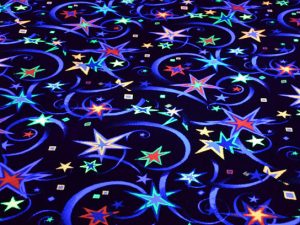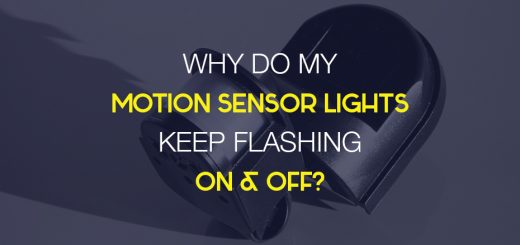Easy Ways to Make a Black Light
Black lights, also known as ultraviolet lamps, can come in handy if you are trying to detect counterfeit cash, but they have many other uses such as science experiments, waste detection, air conditioner leaks, body painting, and glass curing among many other things. There is something exciting about how these lights work and they can often be seen in nightclubs, haunted houses, and crime scene programs. These lights were once a novelty item, but new scientific discoveries have put these lights into mainstream use. Black lights work by making an object appear to glow if it contains the chemical phosphor. Phosphors are materials that emit light in response to UV radiation such as a black light. The phosphors convert the energy in the UV radiation from a black light into visible light. There is a complicated science behind it, but we don’t need to get into that.
Black lights use a filter or coating over a bulb to remove most of the visible light, which produces ultraviolet (UV) light. With a black light, you are able to see the fluorescent glow emitted from the phosphors that react to the light. If you do not have a black light in your home and you are in need of one you can easily create a simulation with a flashlight, your smartphone or a tablet with a built-in flash. Please be careful because some light sources may get too hot and melt the plastic that we will be using in our projects.
How to make black light out of your smartphone or tablet
Supplies that you will need
- Blue and purple cellophane and/or transparent tape
- A blue and a purple marker (if you are using the transparent tape)
- A smartphone or tablet with LED flash
Your test subject (example – a black light poster)
 If you are using colored cellophane, cut two small pieces of blue and one small piece of purple. These pieces need to be big enough to cover your flash
If you are using colored cellophane, cut two small pieces of blue and one small piece of purple. These pieces need to be big enough to cover your flash- Place the 2 small pieces of blue over the flash then add the one small piece of purple over top of the blue. Affix these pieces with the transparent tape. Do not tape over the camera if you are planning on taking any pictures of your experiment later
- If you do not have the cellophane used three small pieces of tape. Color two of the blue and one purple. Make sure that you color the areas that will be covering the flash completely leaving no clear areas. Layer the tape pieces over the flash just as you would have if you used the cellophane, blue, blue then purple
- Turn the light on what’s on your device
That’s all there is to it. Now test it out.
How to make a black light out of a flashlight
Supplies that you will need
- A flashlight
- Blue and purple cellophane or clear plastic wrap
- A blue and a purple marker (if you are using the plastic wrap)
- Scissors
- Rubber Bands
Your test subject (example – a black light poster)
- If you have the colored cellophane you are already ahead of the game. Cut two pieces of blue and one of the purple. The pieces need to be cut big enough so that they will cover the end of the flashlight and come part ways up the handle for easy securing
- If you do not have the cellophane, cut the clear plastic wrap and color two of the blue and one purple. Completely color the plastic and do not leave any clear gaps
- Attach one blue piece over the end of the flashlight and secure it tightly with a rubber band. Repeat this step with the next blue piece, then top it off with the purple layer
- Turn on the flashlight
You now have your black light flashlight.
How to make a black light out of a lightbulb
Supplies that you will need
- A lightbulb
- Glass cleaner
- Soft rag
- UV paint (usually comes in black, but can be purchased in other colors)
- Something to stabilize the lightbulb like a ball of clay or a string to hang it
- Paintbrush
 Prepare your lightbulb by cleaning it with the glass cleaner and soft rag and allow to dry completely. Do not touch the bulb after it has been cleaned due to the fact the oil on your hands will keep the paint from sticking.
Prepare your lightbulb by cleaning it with the glass cleaner and soft rag and allow to dry completely. Do not touch the bulb after it has been cleaned due to the fact the oil on your hands will keep the paint from sticking.- Decide on how you want to stabilize your bulb. You can either suspend it by a string or place the base in a ball of clay so that it can stand upright. Either way is fine, you just need the bulb stabilized while you are painting it and letting it dry.
- Put an even layer of paint over the bulb and let it dry completely. It is best to let it set for several hours or overnight. Once the bulb is dry apply another coat and lets it dry.
Your bulb is now ready to put into your light fixture. Be careful with this method. These bulbs can get extremely hot.
If you do not have a black light poster you can easily make one with a permanent marker, poster board, brushes and fluorescent paint or vibrant highlighters. Draw some very thick black lines to separate the colors than color in the areas with your paint or highlighters. If you can, turn off the lights and do the coloring under the black light. Have fun and create wild designs and see how they look.
Always be careful when making or using a black light. The light can get extremely hot and melt the plastic used in our projects. You can possibly burn yourself or cause damage to the device that you are using. Also, black light exposure is safe in small doses, but excessive exposure to UV wavelengths has been linked to possible growths of malignant melanoma.



